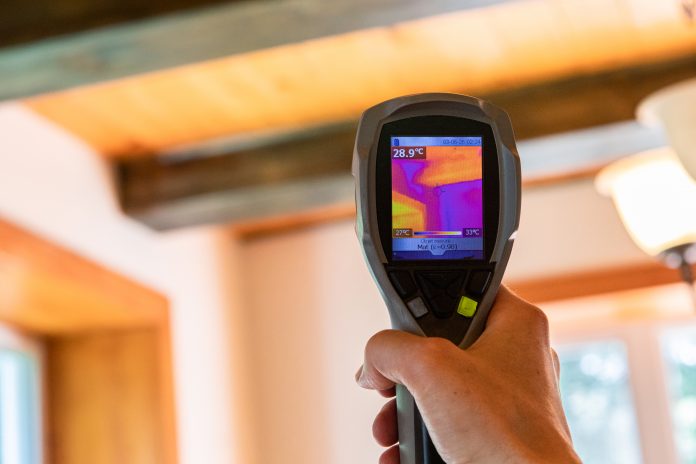Ahead of Clean Air Day, PBC Today spoke with Tom Garrigan, technical director at BSRIA, about the new air quality initiative at its facility in Bracknell
BSRIA has carried out ventilation works at its facility in Bracknell and has been measuring the air quality there to demonstrate how facilities managers and other building owners/operators can manage IAQ in their buildings.
-
What is the indoor air quality initiative?
BSRIA’s air quality initiative sees the installation of indoor air quality monitors throughout its UK premises, making the data publicly visible and available on its website. This is part of a campaign to help people understand what air quality is, why it is so important to manage, and what can be done to reduce the harmful impact of pollutants.
Several factors influence the quality of indoor air, including pollution concentrations from outdoor air, emissions from internal sources, and ventilation effectiveness.
Effective monitoring of IAQ reduces the health risks associated with poor indoor air, creating a safer and more comfortable environment for staff, visitors, and training delegates.
-
How have you implemented BSRIA’s indoor air quality initiative?
Prior to installing the sensors, BSRIA indoor air quality specialists carried out an extensive investigation of its premises. This included measuring ventilation system volume airflow rates, verifying the air distribution within the building, and quantifying air changes per hour using carbon dioxide tracer gas tests. The goal of the testing was to prove or highlight any discrepancies as to the ventilation rate to keep the CO₂ concentration below 800ppm as per the REHVA guidance on reliable indoor air quality.
This exercise provided an actual baseline dataset to establish if CO₂ concentrations below 800ppm in line with the REHVA guidance on reliable indoor air quality could be maintained across the premises and in meeting rooms. The outcome of the measurements prompted the installation of additional local extraction fans to ensure safe and comfortable occupancy.
New IAQ sensors that are accessible to the visitors and employees at BSRIA have been installed.
-
What do you hope to achieve with the indoor air quality initiative?
To further promote the importance of good indoor air quality and practically demonstrate using our premises as a case study, how this can be quantified and monitored on an ongoing basis, whilst also raising awareness to the occupants in a real word application. Our air quality initiative demonstrates that, with the right technology and the right knowledge, air quality can be managed, the long-term harmful effect of pollutants can be mitigated, and the benefits of good health and productivity can be realised in homes, schools, and businesses.”
-
How can the built environment manage indoor air quality? in both residential and commercial buildings
Ventilation and usage guidance are both key to achieving good IAQ. The external conditions will affect the IAQ if this is not mitigated with correct strategies such as filtering, active removal systems and/or cleaning within the occupied spaces.
Increasing occupant awareness of how behaviours or specific activities can impact the quality of indoor air is also critical to achieve and maintain a good indoor environment. Monitoring indoor air quality enables informed data led decisions to be made to maintain/improve the built environment.
-
Why is indoor air quality so important?
The World Health Organisation reports that almost all of the global population (99%) breathes air that exceeds WHO guideline limits and contains high levels of pollutants. WHO data shows that around 3.8 million people die each year because of household exposure to contaminants from cookstoves and fuels.
Air pollution can have a negative impact on our health; from short-term effects such as eye irritation and coughs to long term effects such as respiratory infections and cancer. A wealth of studies from institutions such as Harvard TH Chan School of Public Health suggest that exposure to fine particulate matter (PM2.5) has a negative impact on cognitive functioning, with the likelihood of reduced academic performance in schools and productivity in workplaces.
In the UK, on average people spend more than 90% of their time indoors. The quality of indoor air is affected by outdoor pollution, but also by indoor sources and inadequate ventilation. Particulate Matter, mould, and chemicals released from synthetic fabrics, paints, furnishings, and household products are some of the sources of contaminants that can make indoor air significantly worse than outdoor air at times. Indoor air pollutants may be biological, such as dust mite faeces, mould spores, viruses and pollen, or chemical, such as carbon monoxide, ozone and volatile organic compounds.





![[Video] Fireco: 80 new fire doors required for residential flats in London](https://www.pbctoday.co.uk/news/wp-content/uploads/2025/04/2024-06-01-Lords-view-one_1200x750_004-218x150.webp)








